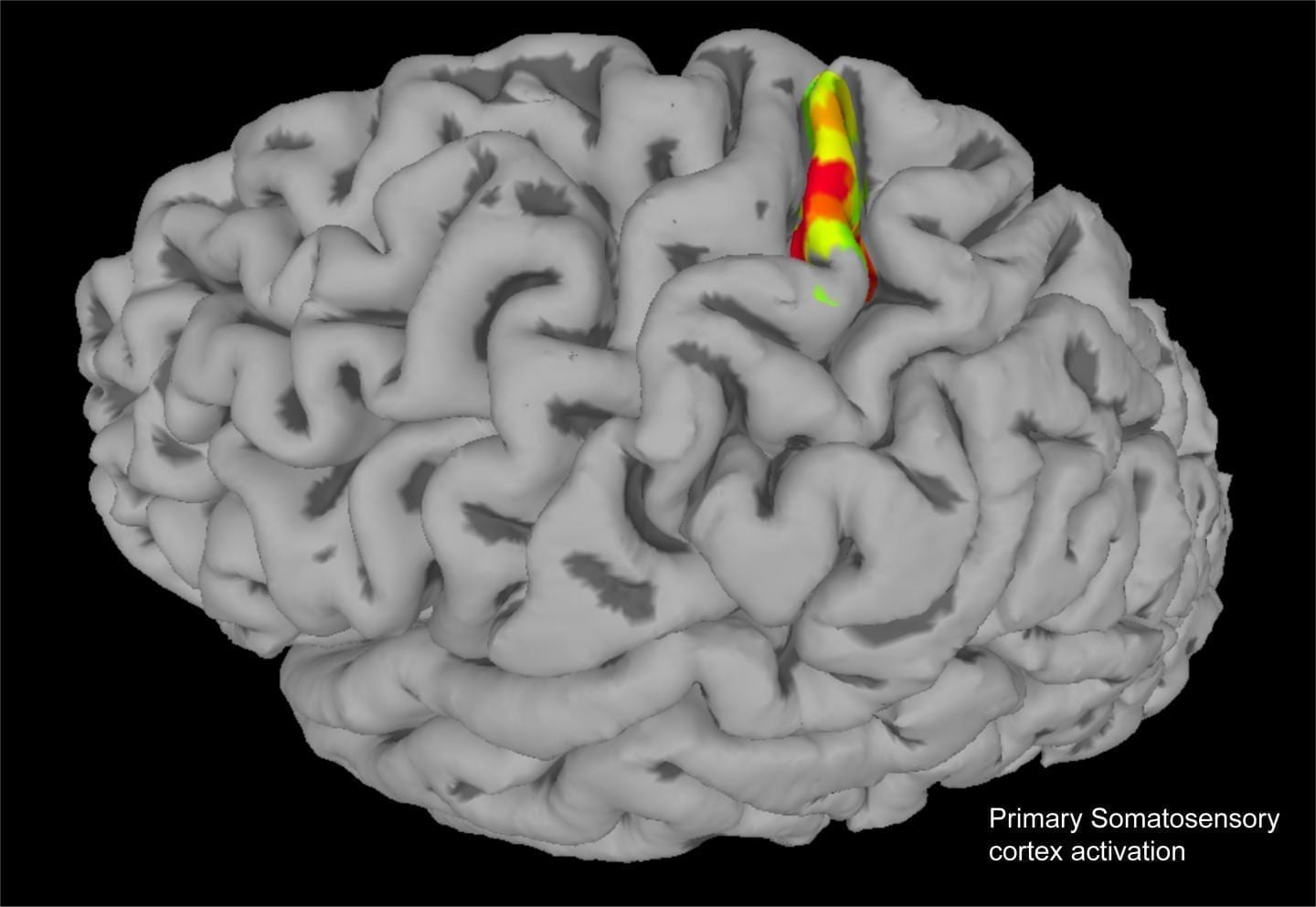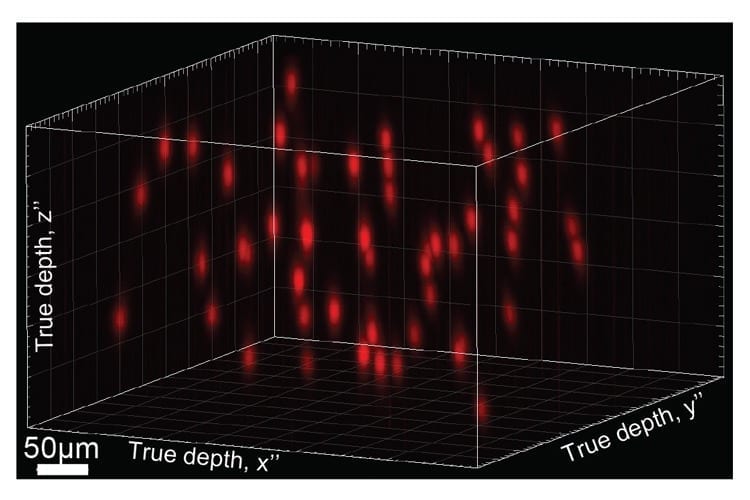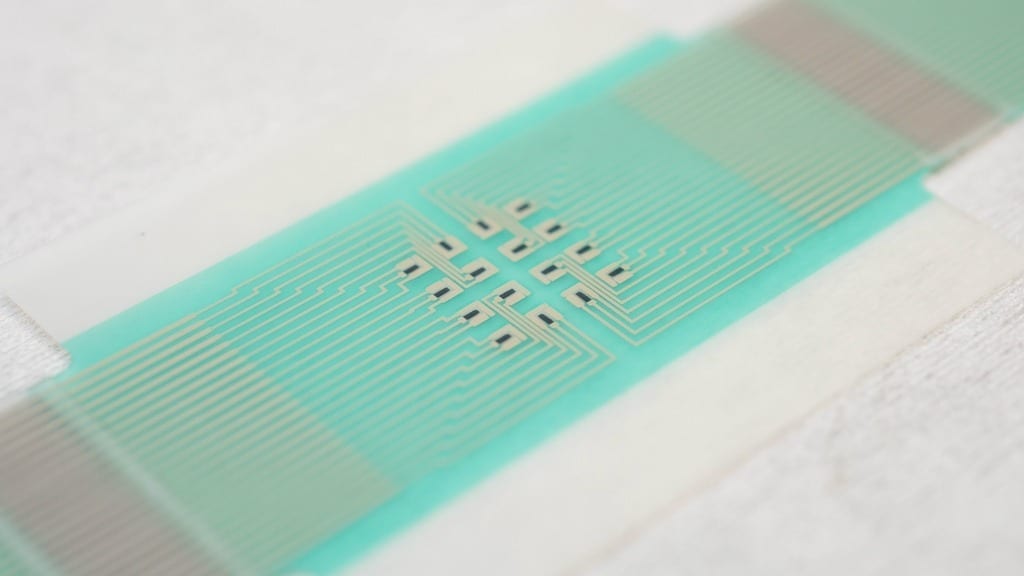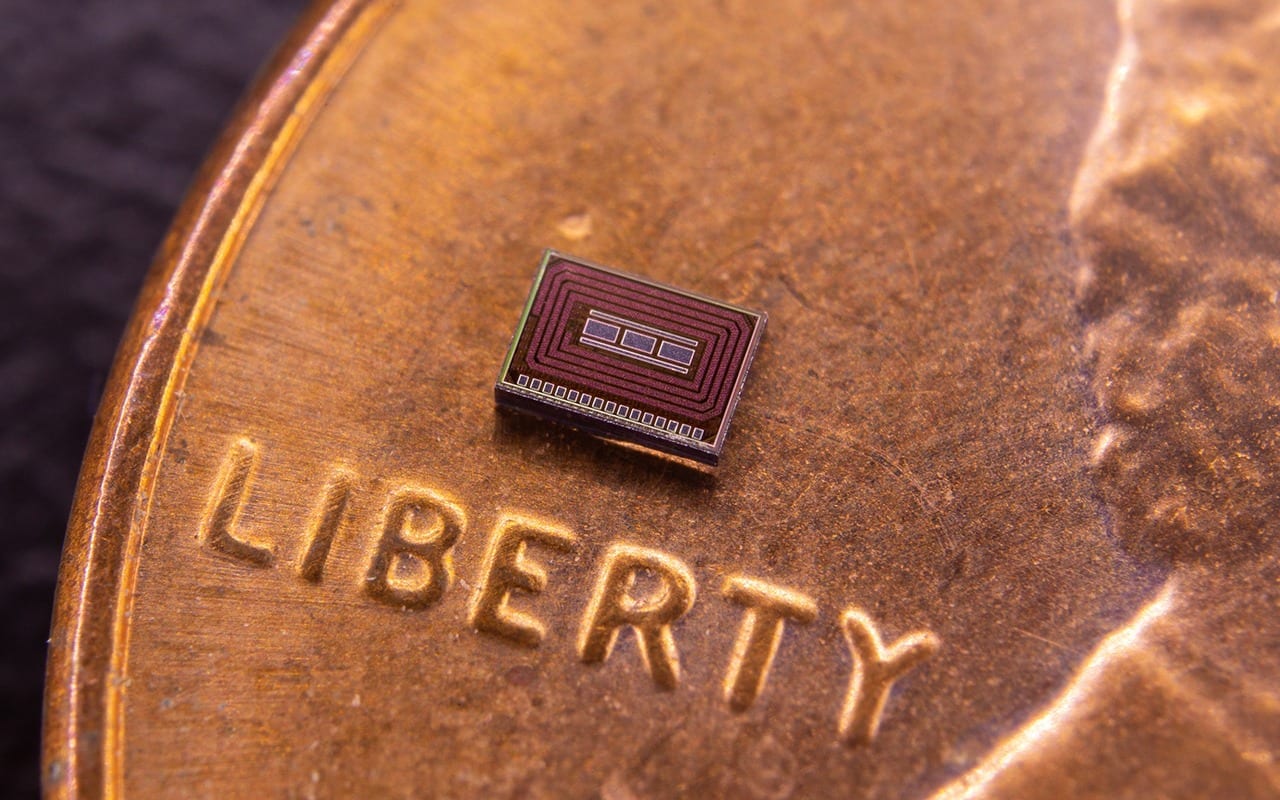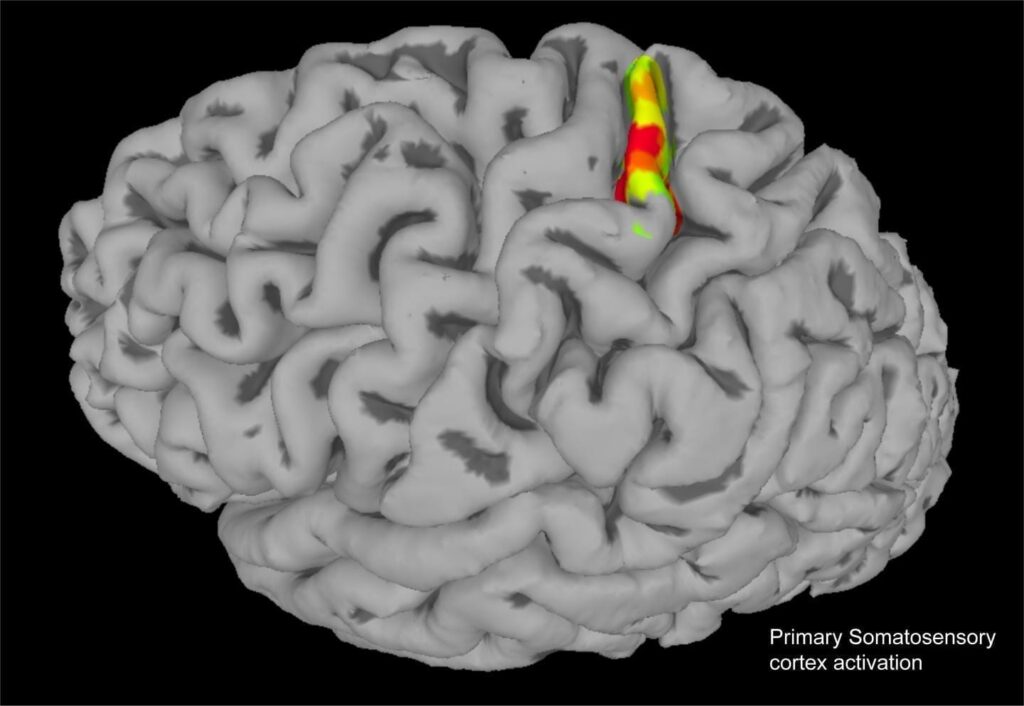
CREDIT
Courtesy of the Andersen lab
Using a tiny array of electrodes implanted in the brain’s somatosensory cortex, Caltech scientists have induced sensations of touch and movement in the arm of a paralyzed man
For the first time, scientists at Caltech have induced natural sensations in the arm of a paralyzed man by stimulating a certain region of the brain with a tiny array of electrodes. The patient has a high-level spinal cord lesion and, besides not being able to move his limbs, also cannot feel them. The work could one day allow paralyzed people using prosthetic limbs to feel physical feedback from sensors placed on these devices.
The research was done in the laboratory of Richard Andersen, James G. Boswell Professor of Neuroscience, T&C Chen Brain-Machine Interface Center Leadership Chair, and director of the T&C Chen Brain-Machine Interface Center. A paper describing the work appears in the April 10 issue of the journal eLife.
The somatosensory cortex is a strip of brain that governs bodily sensations, both proprioceptive sensations (sensations of movement or the body’s position in space) and cutaneous sensations (those of pressure, vibration, touch, and the like). Previous to the new work, neural implants targeting similar brain areas predominantly produced sensations such as tingling or buzzing in the hand. The Andersen lab’s implant is able to produce much more natural sensation via intracortical stimulation, akin to sensations experienced by the patient prior to his injury.
The patient had become paralyzed from the shoulders down three years ago after a spinal cord injury. Two arrays of tiny electrodes were surgically inserted into his somatosensory cortex. Using the arrays, the researchers stimulated neurons in the region with very small pulses of electricity. The participant reported feeling different natural sensations–such as squeezing, tapping, a sense of upward motion, and several others–that would vary in type, intensity, and location depending on the frequency, amplitude, and location of stimulation from the arrays. It is the first time such natural sensations have been induced by intracortical neural stimulation.
“It was quite interesting,” the study participant says of the sensations. “It was a lot of pinching, squeezing, movements, things like that. Hopefully it helps somebody in the future.”
Though different types of stimulation did indeed induce varying sensations, the neural codes governing specific physical sensations are still unclear. In future work, the researchers hope to determine the precise ways to place the electrodes and stimulate somatosensory brain areas in order to induce specific feelings and create a kind of dictionary of stimulations and their corresponding sensations.
The next major step, according to Andersen, is to integrate the technology with existing neural prosthetics. In 2015, Andersen’s laboratory developed brain-machine interfaces (BMIs) to connect a prosthetic robotic arm to electrodes implanted in the region of the brain that governs intentions. In this way, a paralyzed man was able to utilize the prosthetic arm to reach out, grasp a cup, and bring it to his mouth to take a drink. Connecting the device with the somatosensory cortex would create bidirectional BMIs that would enable a paralyzed person to feel again, while using prosthetic limbs.
“Currently the only feedback that is available for neural prosthetics is visual, meaning that participants can watch the brain-controlled operation of robotic limbs to make corrections,” says Andersen. “However, once an object is grasped, it is essential to also have somatosensory information to dexterously manipulate the object. Stimulation-induced somatosensory sensations have the potential added advantage of producing a sense of embodiment; for example, a participant may feel over time that the robotic limb is a part of their body.”
Learn more: Paralyzed patient feels sensation again
The Latest on: Intracortical stimulation
[google_news title=”” keyword=”intracortical stimulation” num_posts=”10″ blurb_length=”0″ show_thumb=”left”]
via Google News
The Latest on: Intracortical stimulation
- How to Have Multiple Orgasms When One Just Isn’t Enoughon May 9, 2024 at 11:22 pm
Different people respond differently to sexual stimulation, including in the type of orgasm (intense, or milder) and the frequency and number of orgasms they have. You might have a few smaller ...
- This EMS Device Tightens My Jawline in 10 Minuteson April 18, 2024 at 3:15 am
Although I've seen them plenty of times on television and Instagram, I only recently learned that those suits use electrical muscle stimulation, more commonly known as EMS. They essentially allow ...
- FDA renews proposed ban on electrical stimulation deviceson March 24, 2024 at 5:00 pm
(CNN) — The US Food and Drug Administration is again proposing a ban on electrical stimulation devices used to reduce or stop self-injurious or aggressive behavior, the agency said in a ...
- Cognitive Stimulation Therapy (CST) and iCSTon October 15, 2023 at 10:13 pm
Saint Louis University’s Geriatric Education Center (GEC) offers cognitive stimulation therapy (CST), a support group for people experiencing memory challenges. Cognitive stimulation therapy (CST) is ...
- Transcranial Magnetic Stimulation Therapyon July 12, 2023 at 1:01 pm
Transcranial Magnetic Stimulation (TMS) is a non-invasive procedure that delivers magnetic pulses to the brain to change neural activity. It is used to treat mental health disorders, particularly ...
- A Tiny Coiled Wire to Stimulate Brain Activity (4 of 5) (IMAGE)on January 5, 2022 at 8:25 am
The paper, by S.W. Lee at Boston VA Healthcare System in Boston, MA, and colleagues was titled, " Implantable micro-coils for intracortical magnetic stimulation." ...
- UAB-TBIMS In-home Cognitive Stimulation Guidebookon August 16, 2020 at 9:43 pm
The UAB-TBIMS In-home Cognitive Stimulation Guidebook offers activities to stimulate thinking skills of people with brain disorders. Each activity provides a group of tasks listed by their level of ...
- Irwin, Zachary, Ph.D.on December 19, 2019 at 2:51 am
He used intracortical and peripheral neural interfaces to study ... of stimulus-evoked neural activity as an electrophysiological biomarker to guide deep brain stimulation in patients with movement ...
- Transcranial magnetic stimulation for the relief of chronic painon April 29, 2019 at 5:10 am
rTMS seems to work by restoring defective intracortical inhibitory processes. The optimal strategies were hand area stimulation for patients with facial pain and face area stimulation for patients ...
via Bing News








